BBC Future
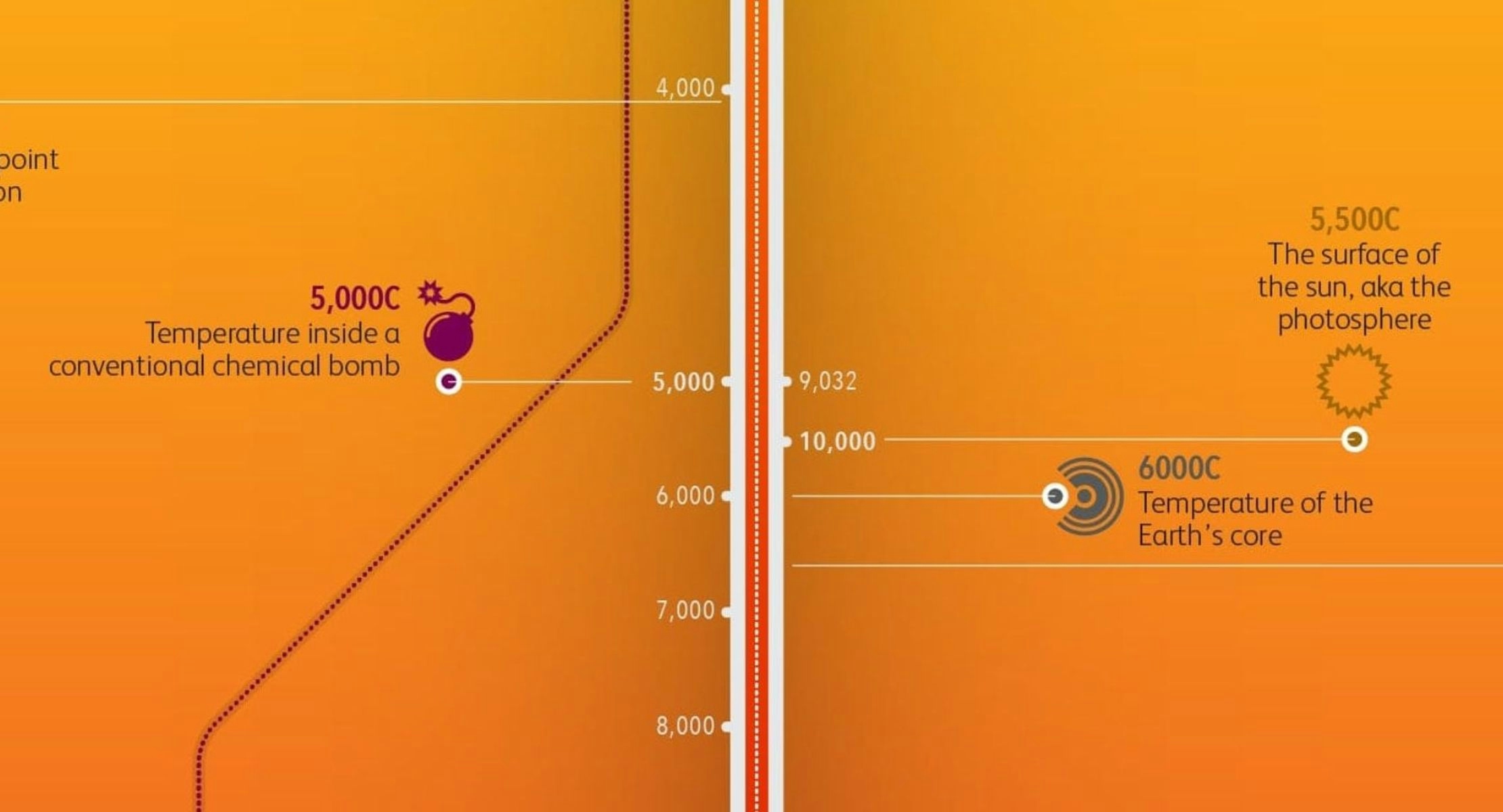
The BBC wanted answers. So we cooked up an interactive thermometer to take us through the milestones from absolute cold to extreme heat.
We researched every topic we could think of. From where things melt, like butter (36°C) or iron (1,538°C), to where things boil, like water (100°C) and carbon (4,027°C).
We discovered several people-powered world records, too. From the hottest guy in history (52-year-old heat stroke victim Willie Jones, who survived a body temp of 46.5°C) to the coldest inhabited place on Earth (the Siberian village of Oymyakon, -46°C).
We organised this data into six categories. Half were down to Earth (Elements, Living things, Man-made), the other half were far out (our planet, the solar system, the universe).
We designed our interactive visualization like an inverted thermometer. Why the flip? We wanted the story to build to a big finish. From our sub-zero start point at -273°C to 33-digit temperatures where physics itself breaks down, the final interactive lets you span everything the coolest curiosities to the hottest topics.
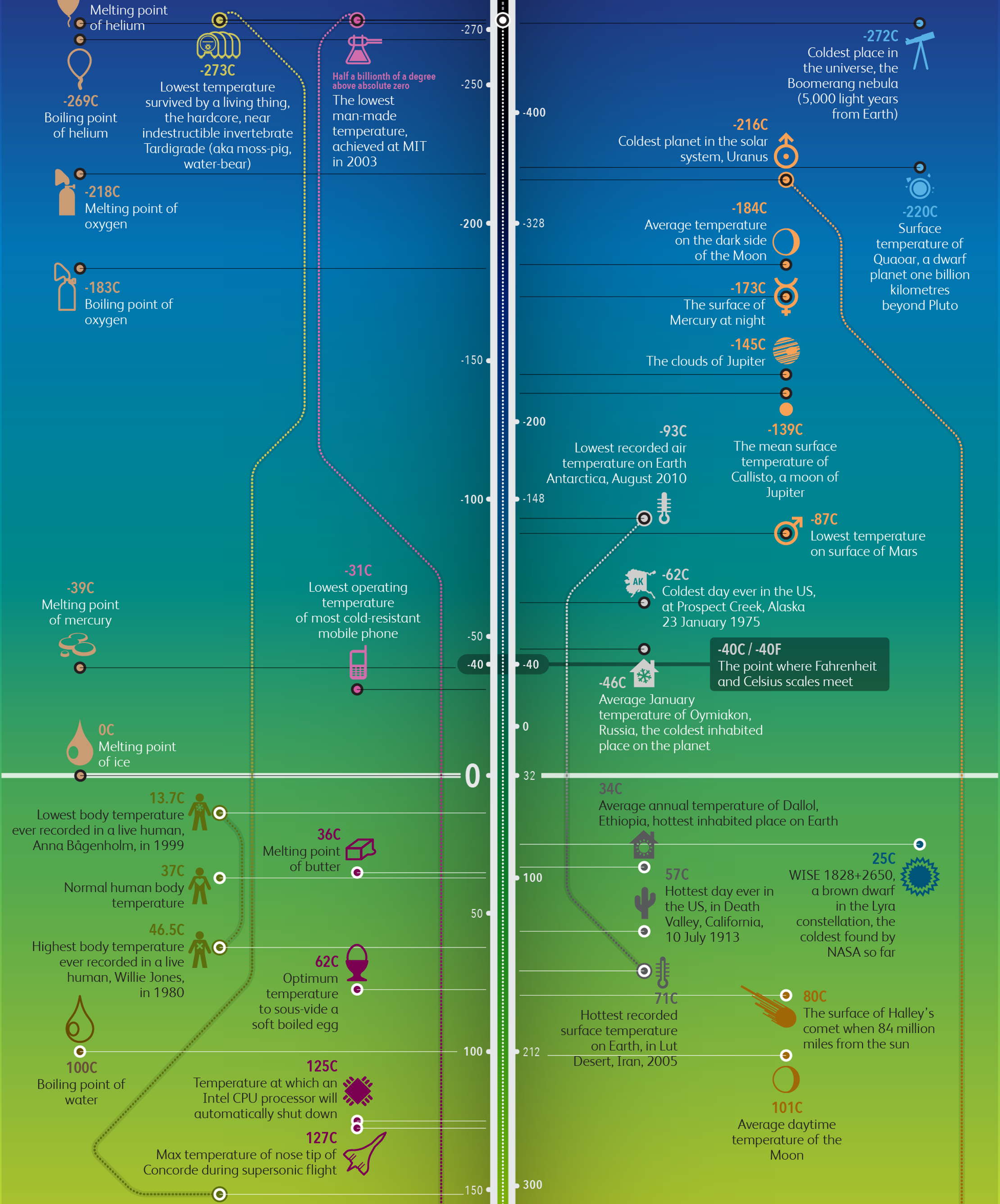
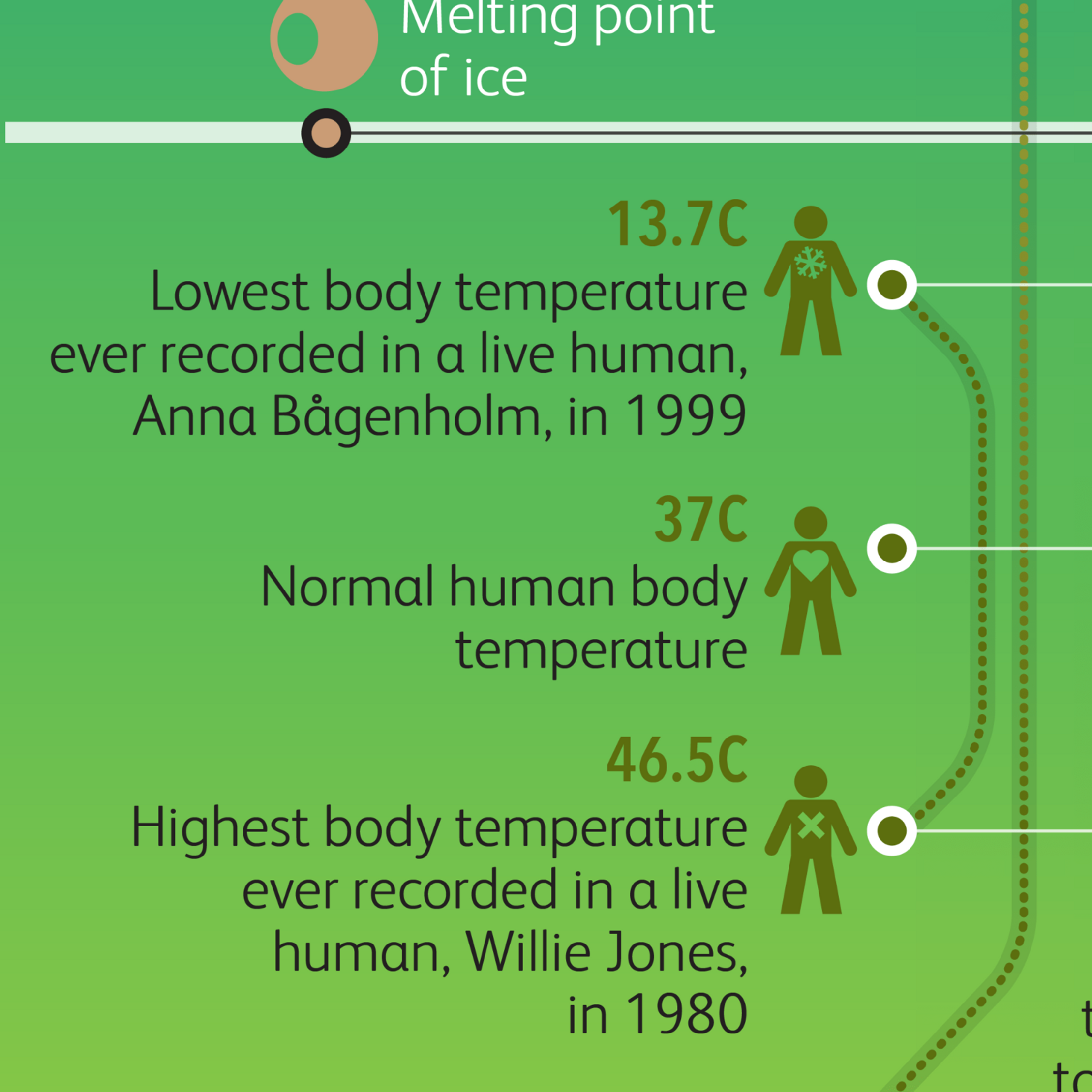
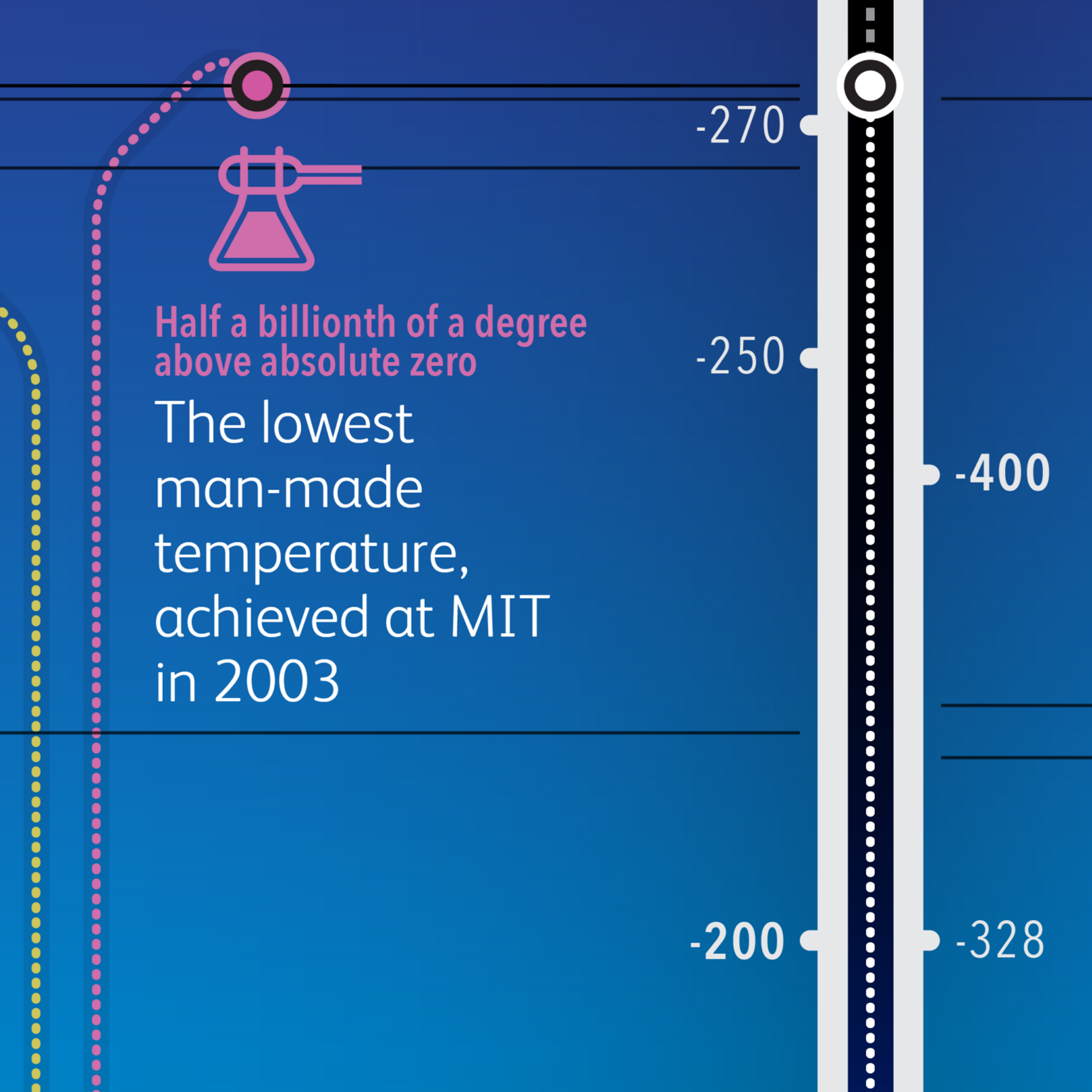
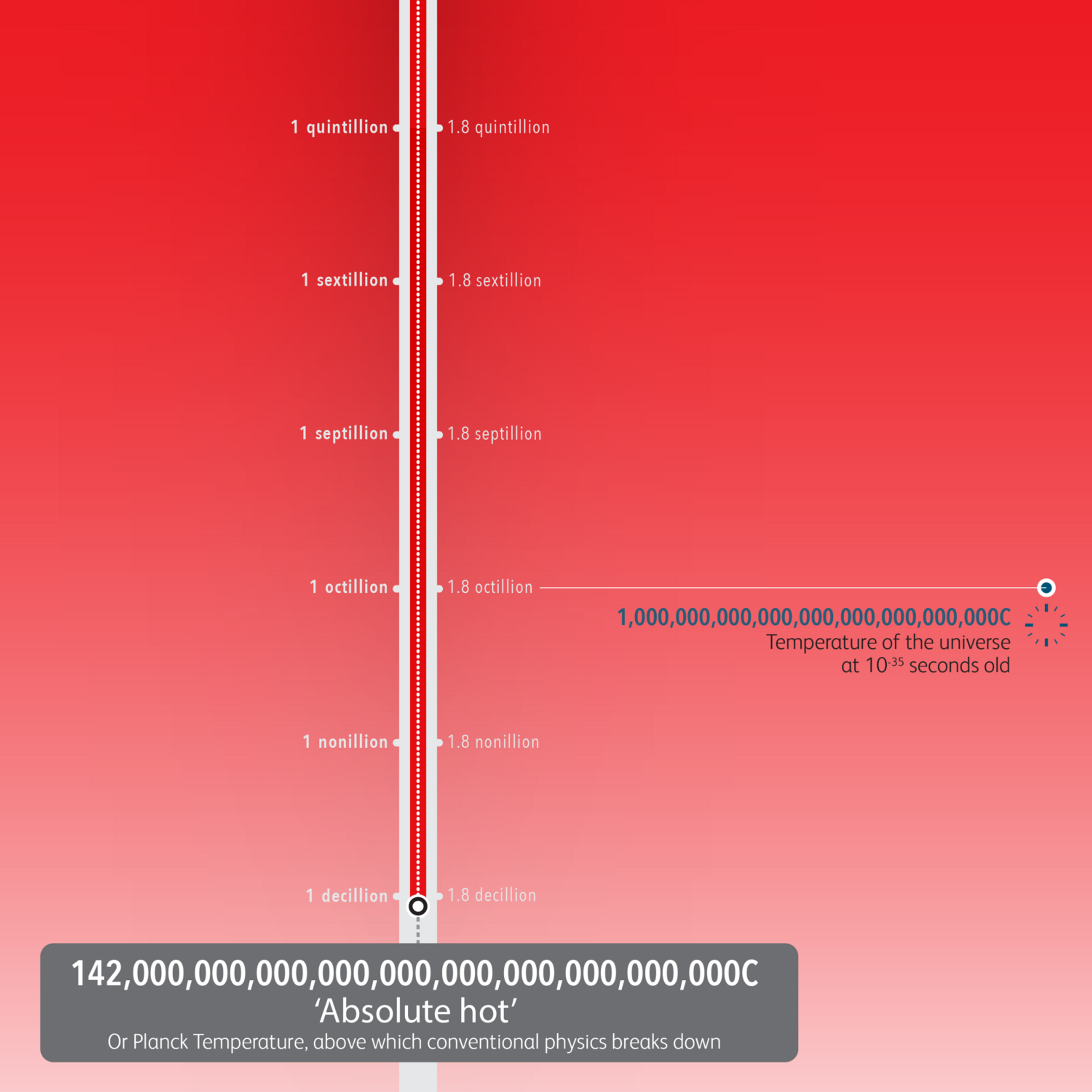

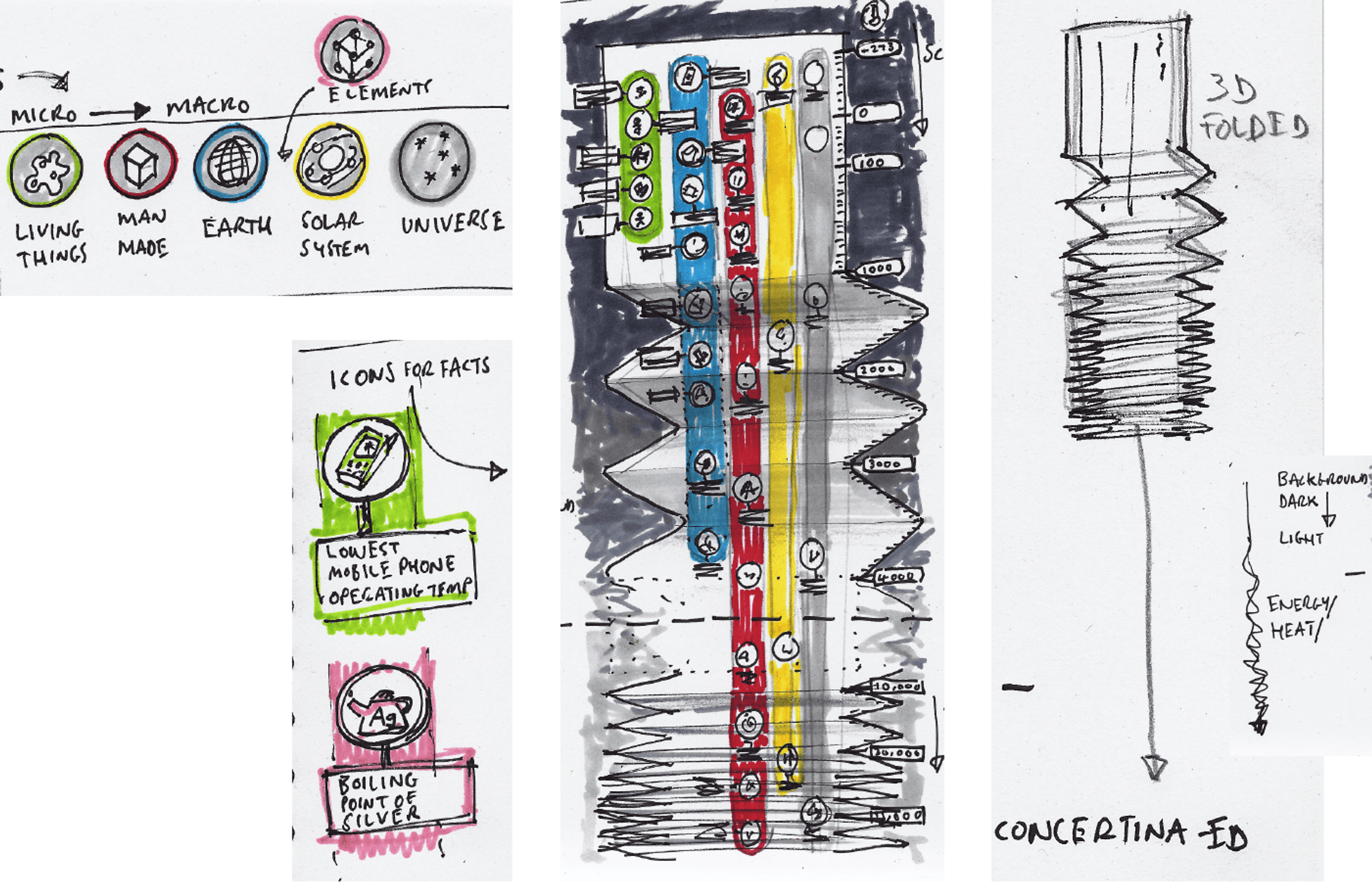
Get in touch:hello@beyondwordsstudio.com
